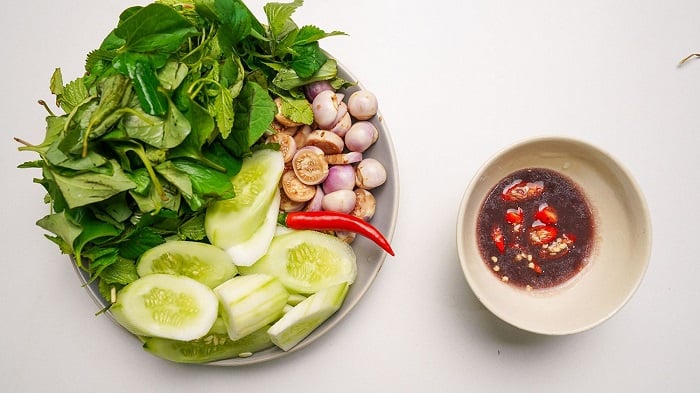
If you are a foodaholic, Vietnamese specialties served with shrimp paste are definitely a must-try for your Vietnam travel journey. It is present in many famous Vietnamese dishes, such as bun dau mam tom, bun rieu cua, and cha ca La Vong. This paste tastes incredible regardless of its strong salty smell.
1. What does shrimp paste taste like?
What is shrimp paste? Mam tom, or shrimp paste, is a staple of Vietnamese cookery. This condiment is made by salt-fermenting crushed shrimp. The best shrimp paste will be a violet thick paste with a strong smell.
In terms of shrimp paste usage, in Vietnamese cuisine, mam tom serves both as a dipping sauce and a spice. The famous “bun dau mam tom” and “cha ca La Vong” would not have the right flavor if there was no shrimp paste dipping sauce. It is also the spice of other Vietnamese food like “gia cay” and “thit rang mam chung”.
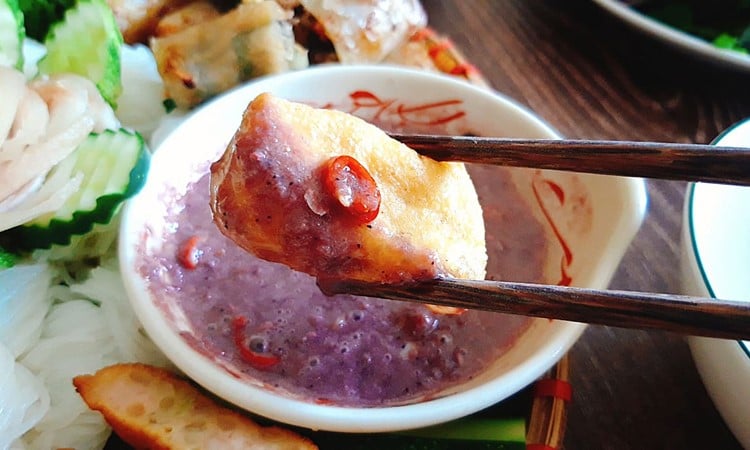
At first try, picky eaters might not be used to fermented shrimp paste due to its strong smell. Mam tom is often voted by foreign travelers to be one of the most difficult things to eat in Vietnam. However, once you have gotten used to its flavor, you will easily get addicted.
2. How to make shrimp paste according to Vietnamese recipe?
As its name suggests, this fermented paste is made from shrimp. As shrimp are crustaceans, they need rubbing time and again. The shrimp must be shelled or crushed in advance. Then, they are mixed with a proper amount of salt so that the enzyme in the shrimp’s gut will work and other disintegrating bacteria cannot do harm.
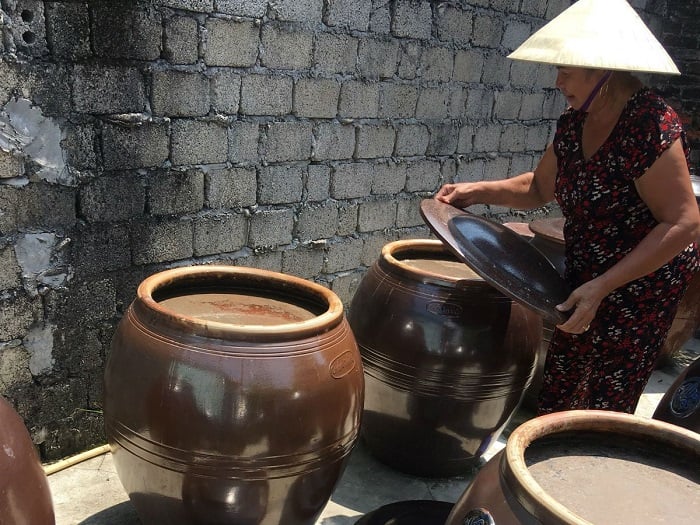
The key to a perfect shrimp paste also relies on the amount of salt used. Only professional shrimp paste makers know how much would be enough. After mixing the shrimp with salt, the maker has to expose the paste to sunlight and stir it regularly to reduce the smell during the fermenting process. It should be kept for 6 months to 1 year before being used.
You may also like:
- Vietnamese Coffee: A national drink favored by international travelers
- Vietnamese spring rolls: Satisfy your appetite with a well-liked food
- Green Sticky Rice (Com): An iconic food to enjoy the autumn vibe in Vietnam
3. The typical shrimp paste uses in Vietnamese cuisine
The salty shrimp paste is the key to the flavor of many famous Vietnamese dishes. Various types of shrimp paste can be used as a marinade or added to already-cooked foods, including stir-fries and noodle soups.
3.1. As a dipping sauce
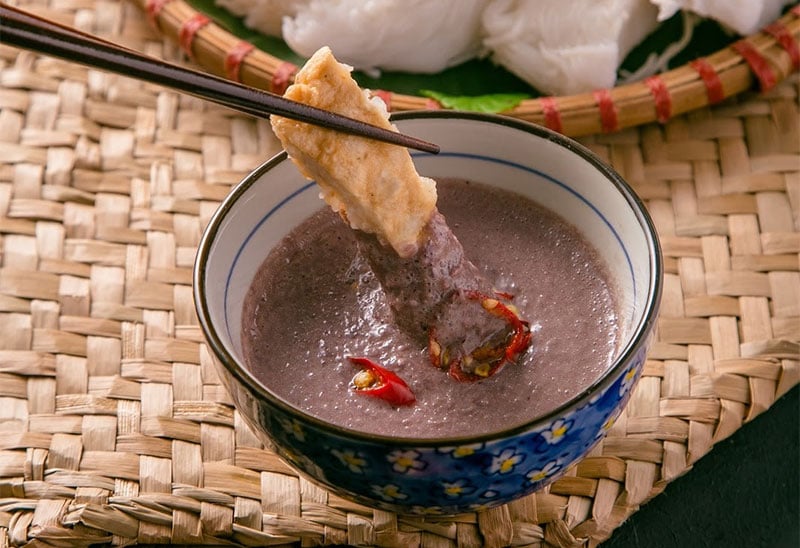
Shrimp paste dipping sauce appears in many famous Vietnamese specialties. It is even present in the name of the dish, namely “bun dau mam tom” (rice vermicelli with fried tofu and shrimp paste). Of course, eaters can replace shrimp paste with fish sauce or chili sauce, but the taste will no longer be authentic.
Below are some popular dishes that “mam tom” is served with as a dipping sauce. Don’t miss out on them on your culinary journey in Vietnam.
3.1.1 Bun dau mam tom
“Bun dau” - rice vermicelli with fried tofu - is one of the most well-known Vietnamese dishes. It is regarded as an embodiment of Vietnamese cuisine in general and Hanoi in particular.
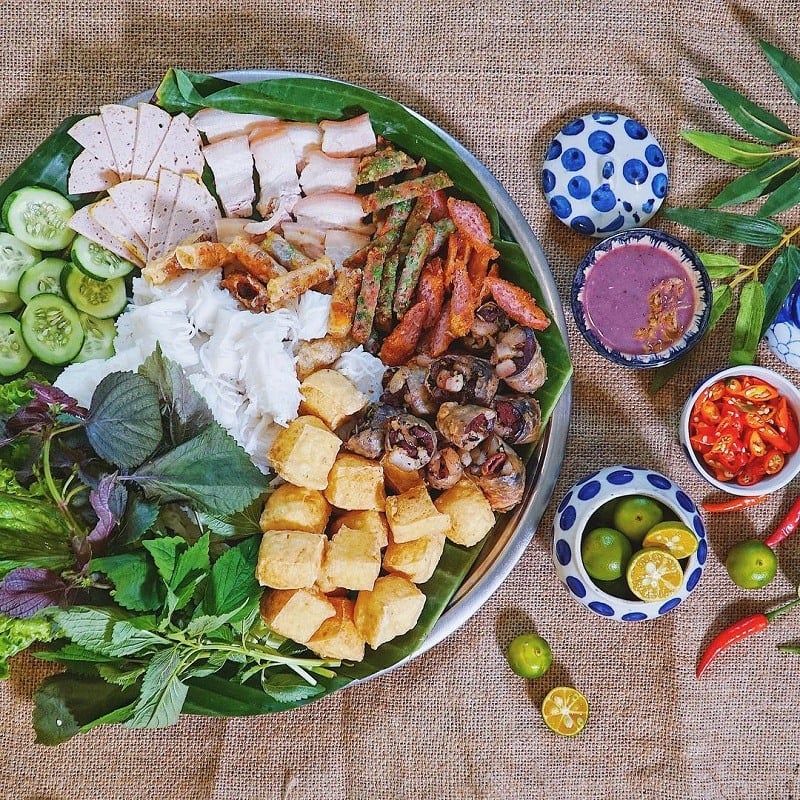
The basic “bun dau mam tom” includes rice vermicelli, fried tofu, veggies, cucumber, and, most importantly, a bowl of shrimp paste. Nowadays, the locals also add thinly-sliced boiled pork trotter, fried pork intestine, and “cha com” to make an advanced version of this dish.
“Bun dau” can be eaten with dipping fish sauce, but “mam tom” is still preferable. The high-quality shrimp paste is mixed with lemon and sugar. Some drops of hot oil and a few slices of chili are also added to the paste before it is stirred.
The flavors from various ingredients bring along a flavorsome taste to “bun dau mam tom”, which will definitely make your mouth water.
3.1.2. Cha ca La Vong
“Cha ca La Vong” is another reputable delicacy where shrimp paste serves as a dipping sauce. The highlight of this food is grilled fishcake (or cha ca in Vietnamese), which is seasoned with both dill and shrimp paste.
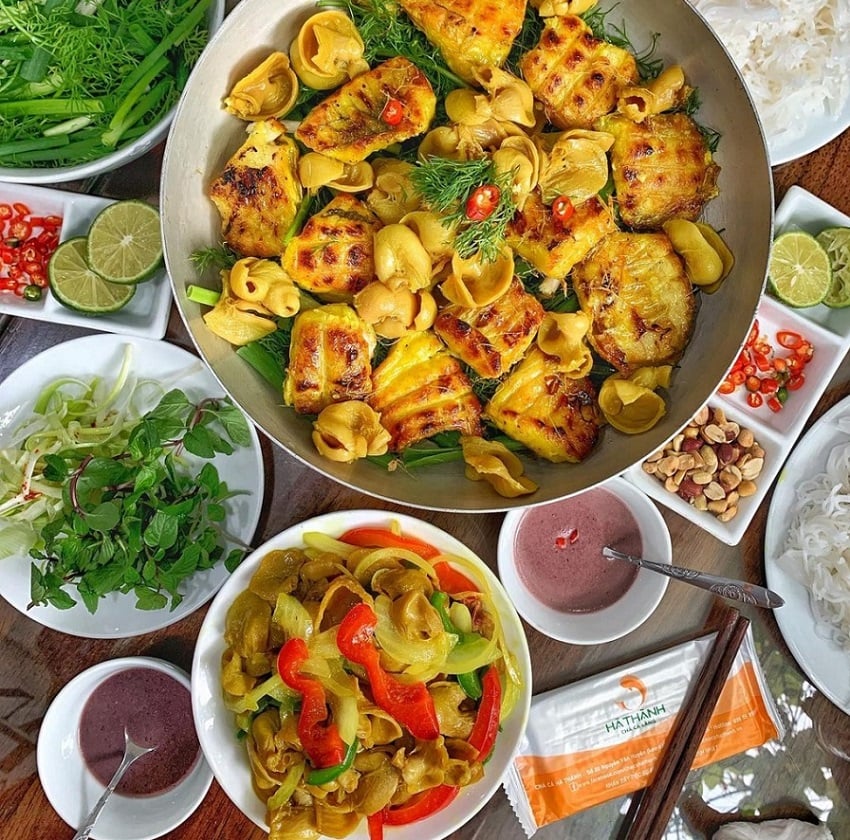
Cha ca comes in a small pan on top of a small portable stove, along with ground peanuts and rice vermicelli. While cha ca is being lightly fried, you can cook the green onion and ginger and add in more dill. The final taste would be something fresh, subtle, and a bit aromatic.
Not only served as a marinade, shrimp paste is also the dipping sauce for this dish.
3.1.3. Boiled pork with shrimp paste
Boiled pork is a common dish everywhere, but perhaps only Vietnamese people serve it with shrimp paste. “Thit luoc cham mam tom” is a rustic dish that appears frequently in the meals of Vietnamese people.
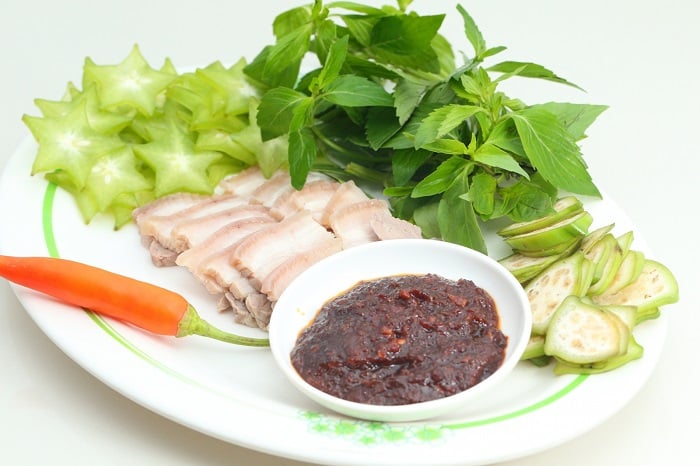
Boiled pork is served with a bowl of mam tom, which is a mixture of shrimp paste, lemon, sugar, and chili. The locals often eat boiled pork with some vegetables like lettuce, fish mint, cilantro, and cucumber.
3.2. As a fermented condiment
Not only is shrimp paste a toothsome dipping sauce, but it is also an indispensable condiment for many local dishes, especially noodles. Some Vietnamese noodle dishes will not be complete if there is no shrimp paste, such as “bun rieu” (rice vermicelli with crab), “bun oc” (rice vermicelli with snail), and “bun thang” (rice vermicelli with chicken, pork, and egg).
3.2.1. Bun rieu cua
“Bun rieu cua” is a popular rice vermicelli dish of Vietnam. It comes with tomato broth and is often topped with minced freshwater crab.
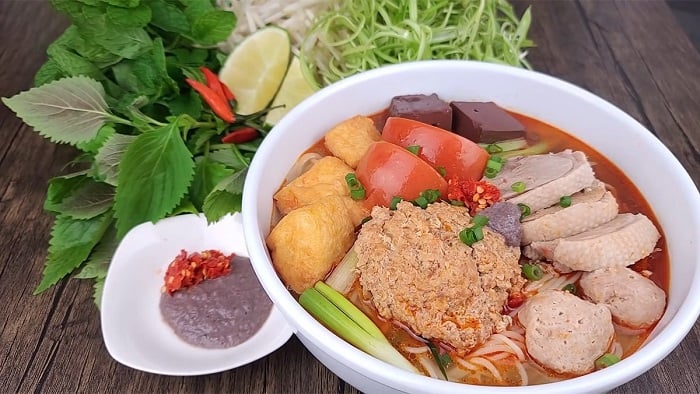
The crabs used in this dish are found on Vietnamese rice paddies. The crabs are grounded into a fine paste. The chef will then strain the paste to take out the crab liquid - the base for the broth. Other ingredients are fried tofu, rice vinegar, meatballs, blood pudding, beansprouts, herbs, and veggies.
To enjoy the full flavor of “bun rieu”, it is essential to add some drops of Vietnamese shrimp paste.
You may also like:
- Egg Coffee Vietnam: Enchant foreign travelers with the special taste
- Vietnamese Fruits: List of TOP 20+ exotic fruits you must try in Vietnam
- Sai Gon cuisine: Plenty of mouthwatering foods await you to enjoy
3.2.2. Bun oc nguoi
“Bun oc” (rice vermicelli with snail) is a specialty that tourists should not miss out on in Hanoi. A delicious bowl of “bun oc” must have a bit of shrimp paste.
Shrimp paste is inherently strong, but when it is combined with the sourness of the vinegar and the flavor of the snails, the final taste is exceptionally appetizing.
3.2.3. Bun thang
“Bun thang” is a delicate dish of the people of Hanoi. It is estimated that there are around 20 ingredients needed to make a scrumptious bowl of “bun thang”. Some typical ingredients are thin omelet, shredded chicken, lean pork paste, Laksa leaves, cilantro, and so on.
Many toppings as it might include, a bowl of “bun thang” will never be complete without shrimp paste. “Mam tom” makes the broth more fragrant and the taste flavorful.
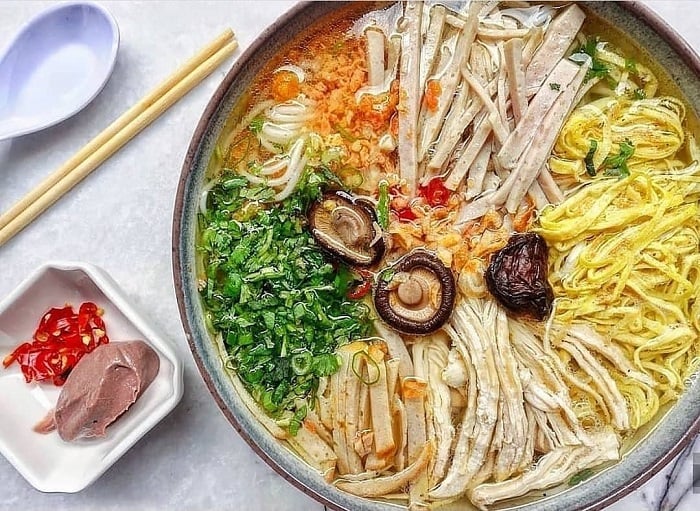
There are also many other local dishes that include “mam tom” as an essential ingredient. No matter which Vietnamese destinations you are going to visit, like Hanoi, Phu Quoc, Nha Trang, Hoi An, Da Nang, you will easily notice the presence of shrimp paste in the local dishes. For a flawless food tour in these places, you should plan your trip in advance regarding the place to stay, the food to eat, and where to find the best dishes.
If you are looking for a reliable place to stay during your Vietnam trip, consider Vinpearl. With a system of luxury hotels and resorts in many famous tourist attractions across the country, Vinpearl is a leading hospitality brand that is reputable for its first-class rooms and top-notch services. Take a quick look at these hotels and resorts to pick the best place for your upcoming tour.

>>> Book rooms in Vinpearl Phu Quoc, Vinpearl Nha Trang, Vinpearl Resort & Golf Nam Hoi An to grab the best deals for the nicest rooms!
Shrimp paste is an essential ingredient of many Vietnamese delicacies. Despite its seemingly strong smell, the appetizing taste it brings will definitely delight your taste buds. If you are about to visit Vietnam, remember to try shrimp paste once or you will regret it later.
























